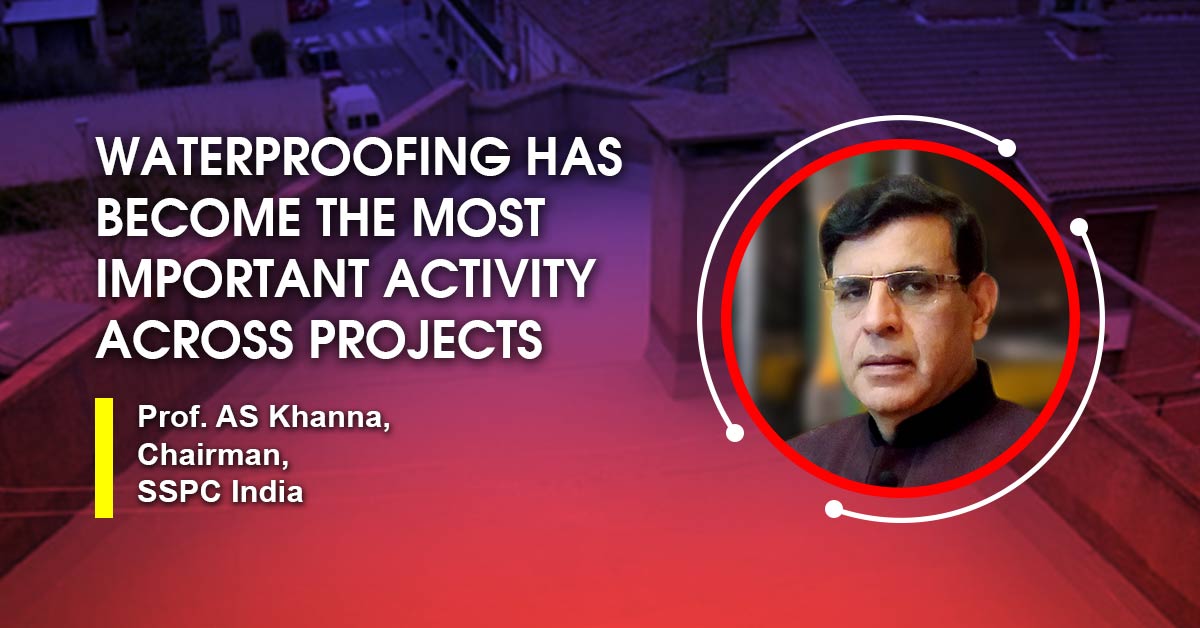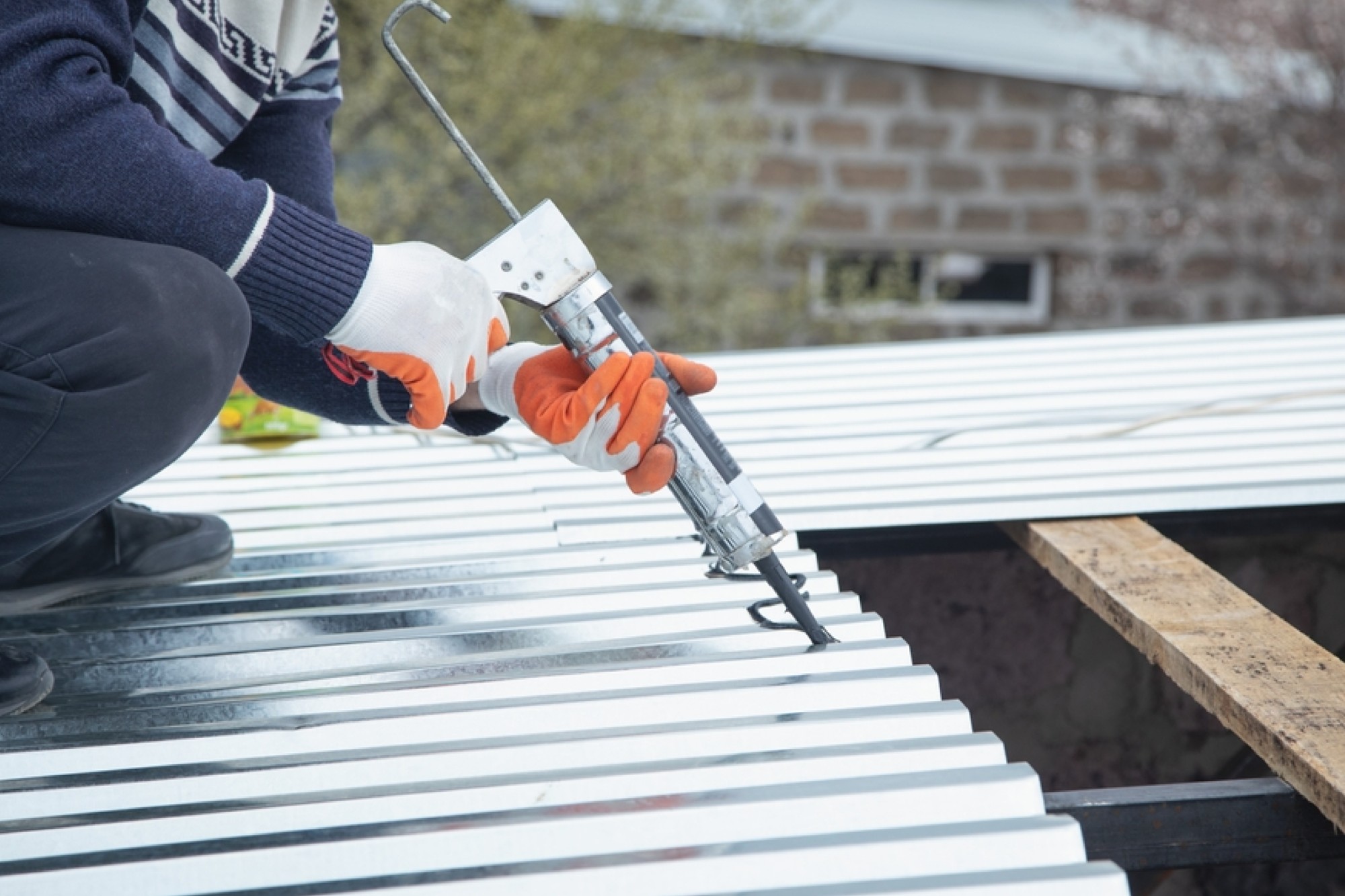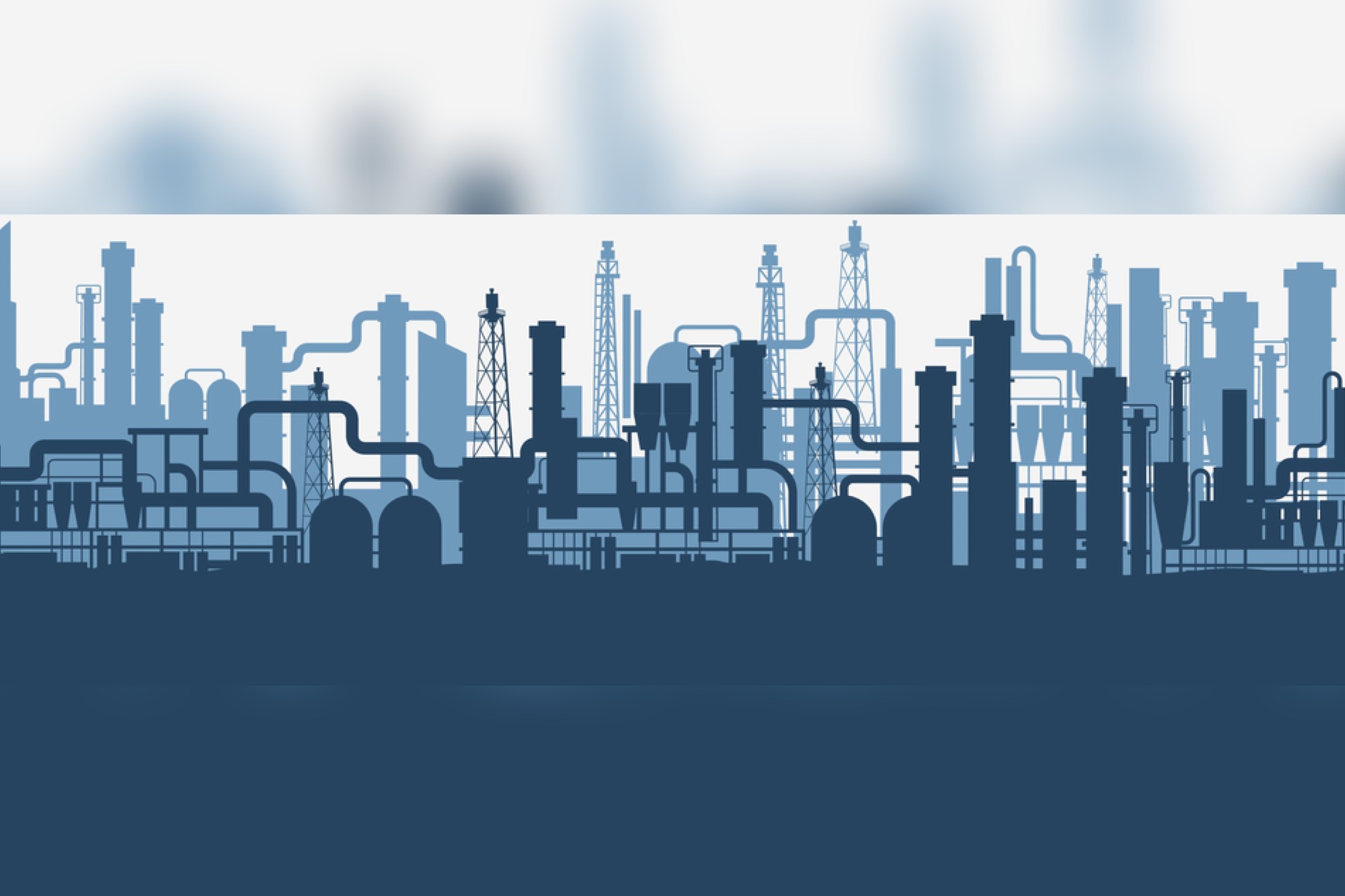Waterproofing has become the most important activity across projects
By Edit Team | June 10, 2021 4:49 pm SHARE

From new construction to the repair of the old structures, waterproofing is essential in residential and also in other buildings, government and public, especially schools, hospitals and recreation centres, says Prof. AS Khanna, Chairman, SSPC India.
What are the different kinds of waterproofing systems and solutions?
This is an important question and just for basic information you should know that waterproofing is of four types:
Cementitious waterproofing: Cementitious waterproofing is the easiest method of waterproofing in construction. The materials which are basically several chemical additives are readily available and they are easy to mix and apply. The applications of the cementitious waterproofing technique are in the internal wet areas, such as toilets, bathrooms, balcony and kitchens. That is why it does not go through the contract and expansion process.
Liquid waterproofing membrane: The liquid membrane consists of a primer coat and two topcoats. The application of the coatings is by spray, roller, or trowel. The liquid layer is thin and offers more flexibility than the cementitious types of waterproofing. The liquid cures into a rubbery coating on the wall and has large elongation. The durability of the waterproofing coating depends on the type of polymer used.
Coating waterproofing: Bituminous coating (asphalt coating) is made of bitumen-based materials. It is a flexible protective coat based on its formulation and polymerisation grade. The flexibility and protection against water can be influenced by the polymer grade and reinforcement of fiber.The most common applications of bituminous coatings include areas that are beneath screed wet. It is an excellent protective coating and waterproofing agent, especially on surfaces such as concrete foundations.
Polyurethane liquid membrane waterproofing: Polyurethane liquid membrane method of waterproofing is used for the flat roof area and exposed to weathering. This waterproofing method is expensive. Polyurethane liquid membrane can offer higher flexibility. Polyurethane is very sensitive to moisture content. Therefore before application, one has to be very careful evaluating the moisture content of the concrete slab, otherwise peeling or de-bonding of membranes may happen after some time.
How is the market for waterproofing products progressing in the country?
Waterproofing has become the most important activity right from new construction to the repair of the old structures. Waterproofing is essential in residential and also in other buildings, government and public, especially schools, hospitals and recreation centres. Today, seven out of 10 paint companies have initiated their own waterproofing activity. The market in India is huge and from one estimate, the year 2020 has been shown a growth rate at a CAGR of 20 per cent to Rs 5,000 (as per CRISIL). It has huge potential in the real estate industry, in the near future; the expected CAGR of 15 per cent in the coming years by 2025 is a fair industry prediction. Compared to that in the international scenario, a CAGR of 20 per cent is predicted in the coming years.
What are the major waterproofing applications in the road sector?
The condition of many roads in our country is pathetic, especially during the monsoons. This is mainly due to water entering the roads resulting in the damage. One of the ways to rectify roads for water ingress is to apply a water-resistant top layer. I know STP has developed ShaliSeal RSTC, which is a coal tar-based sealer and almost unaffected by water. This product has been applied on various roads of NHAI, PWD and other institutions, and given incredible results. In the same way for bitumen-based roads, bitumen-based fog sealers are used. ShaliSeal RSTC or equivalent water sealers are required to enhance the life of roads from water penetration. It also resists ultra violet radiation, fuel impregnation, aging of asphalt and hence reduces vehicle maintenance.
An Instant, convenient and durable, ShaliPatch is a blend of bitumen, aggregates anti-stripping agent and other chemicals can be used for water proofing of potholes by directly placing into the pothole. No heating or road roller required.
What are the new features being developed in waterproofing products with respect to market requirements?
Nano modified waterproofing compounds are the latest. The advantage of a nano modified water proofing compound is that it is more uniformly distributed in resin matrix, leaving almost no place of resin to be available for water permeability. Fig. 3 shows a micro additive in a resin (a) compared to a nano-additive in the resin; (b) large surface area of anno additives covers every hook and corner of the resin and thus prevents water to permeate through resin.
We have recently launched a nano modified waterproofing compound in the name of ThermogreenWP51. It can be applied in three coats. The first coat is called absorption coat which is applied by diluting the compound with water on a clean dust-free surface. The purpose of this coat is to seal all micro pores which perhaps may be ready for growing followed by leaking. After this is fully dried, a paste of 50 per cent of WP51 is mixed with white cement and is applied on all big cracks or edges of a roof by widening it before filling. This is followed by a complete layer of this paste on the whole surface. This three-layer treatment, followed by a cement final layer or tiling is guaranteed for five years. A similar treatment till five layers can give a life of 7-10 years.
We are also using this water proofing compound as a primer for solar heat reflecting coating which is applied as fourth layer on this well dried primer. This water proofing compound is most useful for wet walls, kitchen and bathroom floors just before the final cement plastering or tiling. Details can be seen on our website www.thermacool.in
What will drive the growth of waterproofing products in future?
In the coming years, the waterproofing industry will depend on the following drivers – the government’s emphasis on infrastructure development using better technology that assures failure from water leaking, rising aspirations of a large middle-income group to have fancy but leakproof roofs and kitchen bathrooms for the life of building, use of green technology and construction chemicals meeting these norms.
A better technology than using construction chemicals or membranes alone is required. Nano modified primer layers or nano-additives in the admixtures of cement are the need of the hour. A newer technology of using graphene in the admixtures in general and especially during pothole repairing gives extra strength and leakage resistance.
Cookie Consent
We use cookies to personalize your experience. By continuing to visit this website you agree to our Terms & Conditions, Privacy Policy and Cookie Policy.




































-20240213125207.png)

























